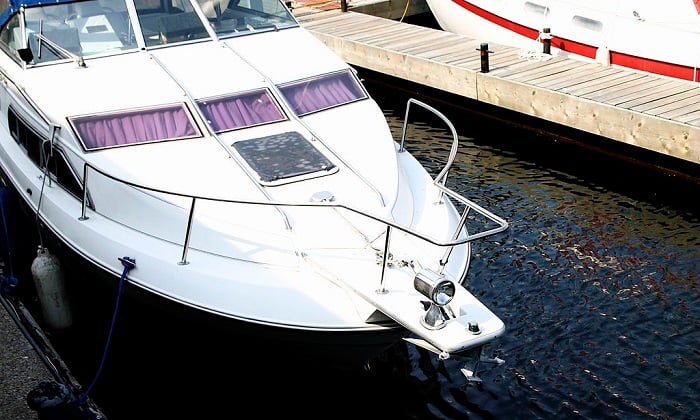When docking your boat, it is recommended to approach the dock slowly and at a controlled speed to avoid accidents and damage. As a responsible boater, it is essential to follow this practice to ensure a safe and successful docking experience.

Credit: www.boatingbasicsonline.com
Table of Contents
Which Of The Following Is Recommended When Docking Your Boat
Docking your boat safely and effectively is an essential skill for any boat owner. Whether you’re a seasoned sailor or a novice at the helm, understanding the recommended practices for docking can help prevent accidents and ensure a smooth transition from open water to the dock.
In this section, we’ll explore the key considerations and actions to take when docking your boat.
Approach The Dock With Caution And Control
- Maintain a slow and controlled speed as you approach the dock. This allows for better maneuverability and the ability to make adjustments as needed.
- Keep a lookout for any obstacles or other watercraft in the vicinity that could interfere with your docking procedure.
- Use your boat’s wind and current direction to your advantage. Understanding how these factors affect your boat’s movement can help you plan your approach and adjust accordingly.
Position Your Boat For A Successful Docking
- Aim to bring your boat parallel to the dock. This position allows for easier access to the dock and reduces the risk of damage to your vessel.
- Take note of any docking aids, such as fenders or dock lines, that may be necessary to secure your boat in place. These accessories can help protect your boat from bumps and scratches during docking.
- Consider the water depth when choosing your docking location. Ensuring you have sufficient water depth can prevent your boat from running aground and causing damage.
Communicate And Enlist The Help Of Others If Needed
- Assign crew members or passengers specific roles during the docking process, such as handling lines or fenders. Clear communication and coordination are key to a successful docking.
- If you’re docking in a marina with dock hands or attendants, don’t hesitate to ask for assistance. They are often experienced in docking boats and can offer valuable guidance.
Remember, practice makes perfect when it comes to docking your boat. The more experience you gain, the more confident you’ll become in handling different docking scenarios. By following these recommended practices and taking the necessary precautions, you’ll be equipped to navigate the docking process smoothly and safely.
So, set sail with confidence, knowing you’re prepared to tackle any docking situation that comes your way.
Frequently Asked Questions Of Which Of The Following Is Recommended When Docking Your Boat
How Do You Dock A Boat Safely?
To dock a boat safely, approach the dock slowly and at an angle, allowing for any wind or current. Use the helm and throttle to control the boat’s speed and direction. Prepare your lines and fenders ahead of time, and communicate with your crew for a smooth docking process.
What Is The Best Way To Approach A Dock When Docking A Boat?
The best way to approach a dock when docking a boat is at a slow speed and at a shallow angle. Approach into the wind or current to give you more control. Use short bursts of throttle to adjust your position as necessary and glide gently into position.
How Do You Use Fenders When Docking A Boat?
Fenders are used to protect the boat and the dock. Hang fenders on the side of the boat you will be approaching the dock, positioning them at the correct height to cushion the boat from hitting the dock. Adjust the fenders and lines as needed to secure the boat in place.
Conclusion
When docking your boat, it is crucial to follow the recommended guidelines to ensure a safe and hassle-free experience. Firstly, always approach the dock at a slow speed and maintain constant awareness of your surroundings. Secondly, use appropriate docking techniques such as utilizing fenders and lines to secure your boat in place.
Additionally, be mindful of wind and current conditions, adjusting your approach as necessary. It is also important to regularly maintain and inspect your docking equipment, ensuring it is in good working order. Finally, consider taking a boating course or seeking professional guidance to enhance your docking skills.
By implementing these recommendations, you can navigate the docking process smoothly and protect both your boat and the surrounding environment. Enjoy your boating adventures with confidence!